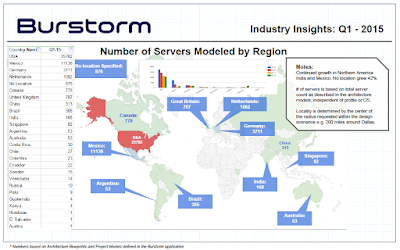Twitter Feed
Strategies And Technologies for Cloud Computing Interoperability (SATCCI)
As I alluded to in an earlier post, a major cloud computing interoperability event will be held in conjunction with the Object Management Group (OMG) March Technical Meeting on March…
Government Cloud Computing E-zine Launched
Today marks the launch of a new electronic magazine dedicated to addressing cloud computing within the government space. Over the last year during my personal exploration of this marketspace, I’ve…
NCOIC Plenary: Cloud Computing Working Group
Last week, I had the pleasure of participating in the NCOIC Cloud Computing Working Group. Led by Cisco Systems Distinguished Engineer, Mr. Krishna Sankar of Cisco Systems, the meeting purpose…
2nd Government Cloud Computing Survey – A Sneak Peek
This month, we’re in the middle of collecting data for our 2nd Government Cloud Computing Survey. to peek your curiosity (an to entice your participation) here is a sneak peek…
Government could save billions with cloud computing
In a recent study, published by MeriTalk, Red Hat and DLT Solutions, the Federal government could save $6.6 billion by using cloud computing or software-as-a-service. “Looking at 30 federal agencies,…
Cloud Games at FOSE 2009
ONLINE REGISTRATION NOW AVAILABLE Booz Allen Hamilton is launching its Cloud Computing Wargame (CCW)T at FOSE March 10-12, 2009 in Washington, DC. The CCW is designed to simulate the major…
IBM and Amazon
According to the Amazon Web Services (AWS) site, you can now use DB2, Informix, WebSphere sMash, WebSphere Portal Server or Lotus Web Content Management on Amazon’s EC2 cloud. “This relationship…
A Berkeley View of Cloud Computing
Yesterday, Berkeley released their View of Cloud Computing with a view that cloud computing provides an elasticity of resources, without paying a premium for large scale, that is unprecedented in…
Cloud Economic Models
One of the most important drivers of cloud computing in the Federal space is its perceived “compelling” economic value. Some initial insight on the economic argument is now available on…
Cloud Computing In Government: From Google Apps To Nuclear Warfare
Today, I want to thank John Foley of InformationWeek for an enjoyable interview and his excellent post, Cloud Computing In Government: From Google Apps To Nuclear Warfare. Our discussion covered…
as the linking of physical components and boxes together in way that addresses the organization’s needs. With this mindset, they focus on specific technical characteristics and capabilities. While these aspects still remain crucial to a successful deployment, the cloud solution architect must instead, visualize solutions as the linking together of compatible and interoperable services. With this viewpoint, the actual physical components are less of a concern and the service levels and service “-ilities” (maintainability, usability, portability, sustainability, etc.) rise in importance. They also must quantify the business economics of any delivered design. Many times economic aspects alone will define the difference between a new service launch and a new idea left on the shelf.
 |
|
Figure 1– Burnstorm cloud solution modeling software use
|
 |
|
Figure 2– Interactive solution design comparisons
|
( This content is being syndicated through multiple channels. The opinions expressed are solely those of the author and do not represent the views of GovCloud Network, GovCloud Network Partners or any other corporation or organization.)
( Thank you. If you enjoyed this article, get free updates by email or RSS – © Copyright Kevin L. Jackson 2015)
Cloud Computing
- CPUcoin Expands CPU/GPU Power Sharing with Cudo Ventures Enterprise Network Partnership
- CPUcoin Expands CPU/GPU Power Sharing with Cudo Ventures Enterprise Network Partnership
- Route1 Announces Q2 2019 Financial Results
- CPUcoin Expands CPU/GPU Power Sharing with Cudo Ventures Enterprise Network Partnership
- ChannelAdvisor to Present at the D.A. Davidson 18th Annual Technology Conference
Cybersecurity
- Route1 Announces Q2 2019 Financial Results
- FIRST US BANCSHARES, INC. DECLARES CASH DIVIDEND
- Business Continuity Management Planning Solution Market is Expected to Grow ~ US$ 1.6 Bn by the end of 2029 - PMR
- Atos delivers Quantum-Learning-as-a-Service to Xofia to enable artificial intelligence solutions
- New Ares IoT Botnet discovered on Android OS based Set-Top Boxes


